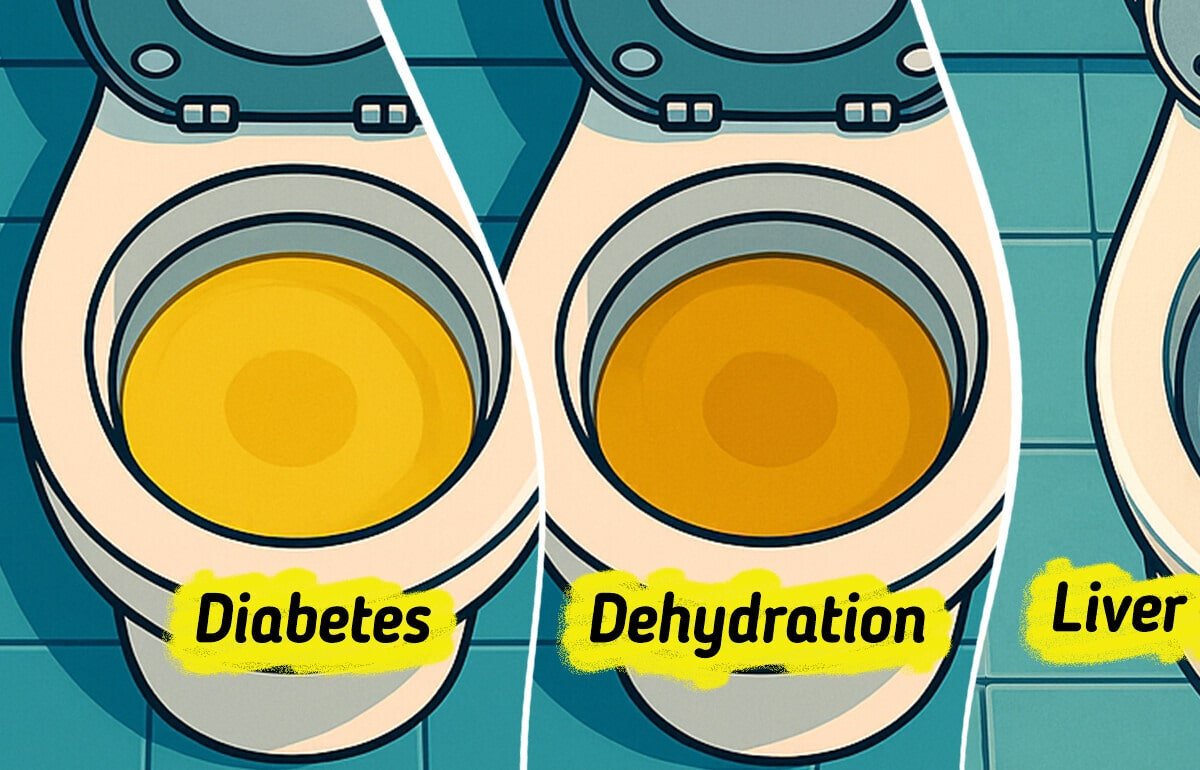Your urine can offer surprising insights into your health. Everything, from its colour and smell to its texture, can reflect your hydration status and even signal underlying health issues. It’s not only about frequency—each trip to the bathroom is your body’s way of communicating with you. Here’s how to understand what your urine might be saying about your well-being.
CONTENT IS PROVIDED FOR INFORMATIONAL PURPOSES ONLY AND IS NOT INTENDED AS A SUBSTITUTE FOR MEDICAL ADVICE. SEEK THE GUIDANCE OF YOUR DOCTOR REGARDING YOUR HEALTH AND MEDICAL CONDITIONS.
1. Urine that smells sweet or fruity.

A sweet or fruity scent in your urine may be a sign that your body is attempting to eliminate excess sugar through urination, which is often a symptom of high blood sugar or diabetes. This can happen when glucose builds up in the bloodstream and spills into the urine. In these cases, urine may range from pale to dark yellow, depending on your hydration levels, since the body loses more fluids while flushing out the extra sugar.
Noticing this kind of smell shouldn’t be overlooked. If it occurs more than once, it’s advisable to consult a healthcare provider to rule out potential conditions, such as diabetes or other underlying issues.
2. Blue or green-tinted pee.
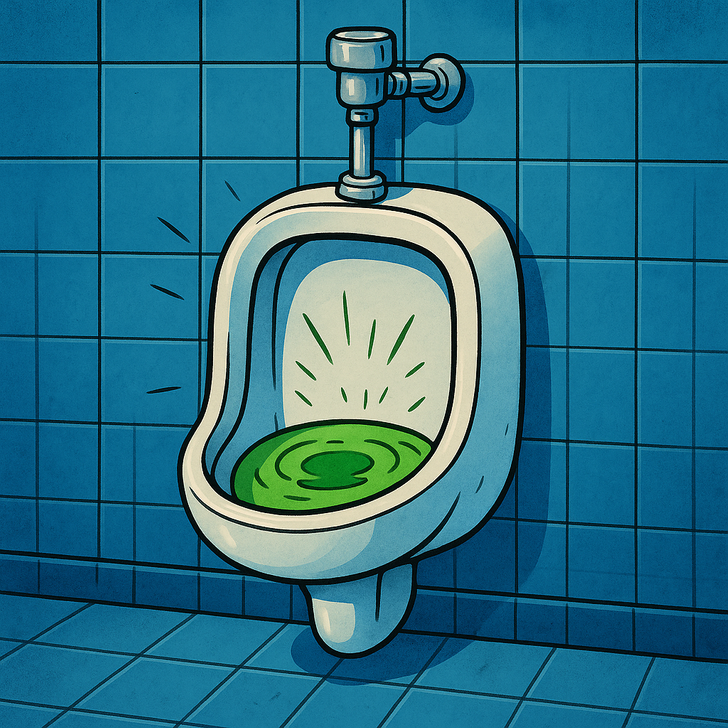
Seeing a blue or green tint in your urine can be surprising, but it’s usually linked to harmless causes, such as food dyes or certain medications. Drugs prescribed for conditions such as depression, acid reflux, pain, arthritis, or sleep disorders sometimes contain ingredients that can alter urine colour to a bluish or greenish hue.
Although this is generally nothing to worry about, there are rare cases, such as a genetic condition called blue diaper syndrome (BDS) in newborns, that can also lead to blue urine. If the discolouration appears without an apparent reason or persists, it’s a good idea to consult a healthcare provider to rule out any underlying issues.
3. Dark and infrequent urination
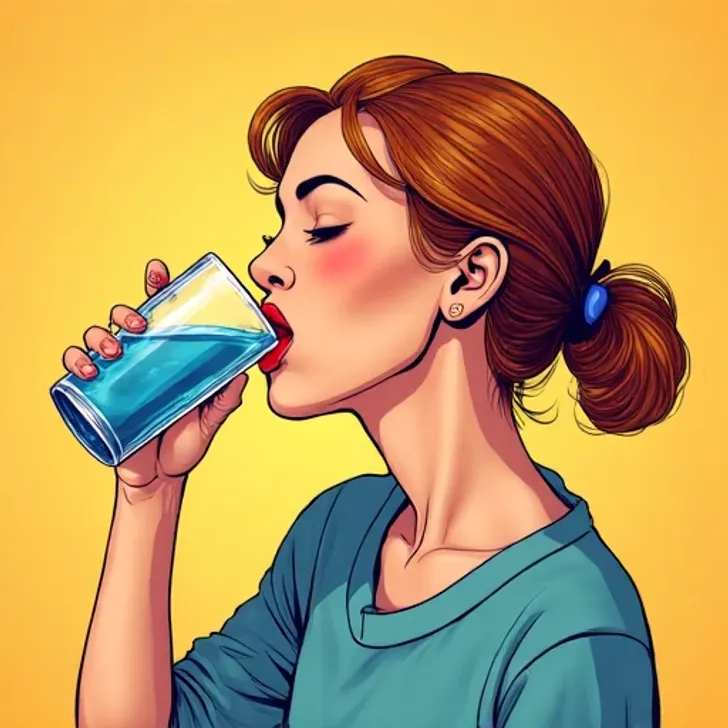
Noticing that your urine is darker than usual and you’re urinating less often may indicate dehydration. Other signs, such as tiredness, nausea, or feeling mentally foggy, can also accompany it. A medical professional can test how concentrated your urine is to determine if you’re properly hydrated.
While dehydration is a common cause of orange urine and usually improves with increased water intake, orange urine paired with pale-coloured stool could signal a bile duct issue. In that case, it’s essential to consult a doctor for further evaluation.
4. Dark brown pee.
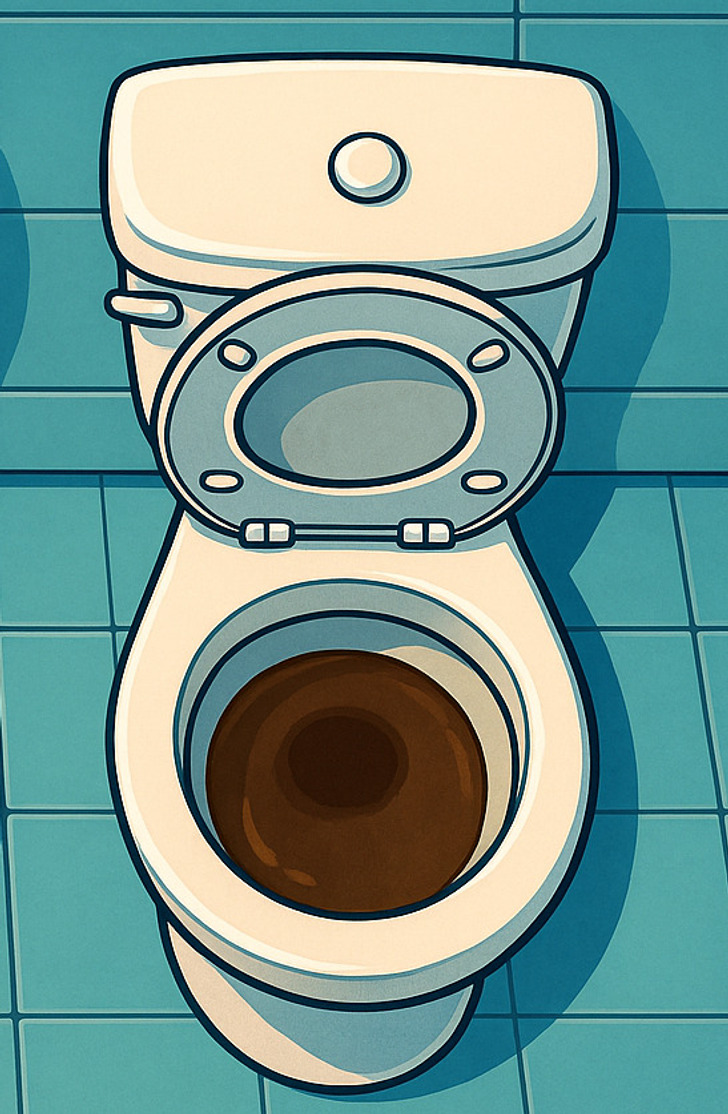
Urine that appears dark brown is often a sign of dehydration, but it can also be caused by certain foods like fava beans or rhubarb, as well as medications such as chloroquine or metronidazole. In some cases, it may be linked to medical conditions, including liver disorders, porphyria, or rhabdomyolysis—a condition involving muscle breakdown.
Strenuous physical activity, especially long-distance running, can lead to a temporary condition called exertional hematuria, which causes dark urine and usually improves with rest. If the colour change persists or is accompanied by other symptoms, it’s best to consult a healthcare provider to rule out any serious health concerns.
5. Urine that smells like ammonia.
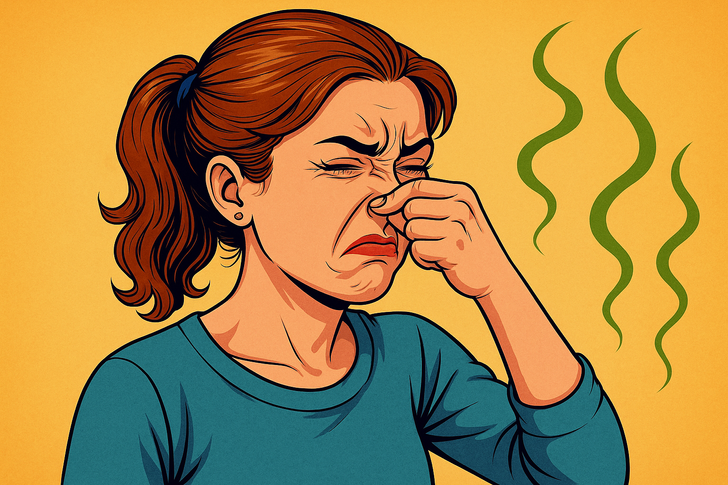
A sharp, ammonia-like odour in your urine may be a sign that you’re dehydrated or could indicate a urinary tract infection (UTI). When bacteria infect the urinary tract, they can cause urine to smell unusually strong. Other possible signs of a UTI include cloudy or pink-tinged urine, a burning sensation during urination, a frequent urge to urinate, fever, or confusion, particularly in older adults.
UTIs are relatively common, particularly among women and older adults. If you experience several of these symptoms simultaneously, it’s essential to consult a healthcare provider to prevent the infection from worsening.
6. Clear urine.

Very light or completely clear urine typically indicates that you’re drinking a lot of water, possibly more than your body needs. While good hydration is essential, overdoing it can dilute important electrolytes, which help maintain your body’s balance.
Occasionally, seeing clear urine isn’t a problem. Still, if it happens frequently and you’re not intentionally consuming large amounts of water, it could signal something more serious, such as liver conditions like cirrhosis or hepatitis. If this condition persists without a clear cause, it’s wise to consult a healthcare professional.
7. Light, cloudy urine.
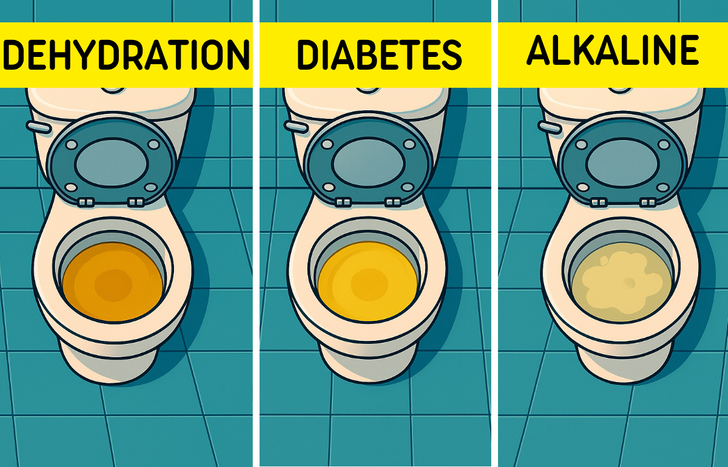
Urine that appears hazy or milky, rather than clear and pale yellow, is often associated with increased alkalinity in the body. This is usually not a cause for concern and can frequently be improved by staying hydrated and following a balanced diet.
However, if the cloudiness happens regularly or persists over time, it may point to an underlying health issue. In such cases, it’s a good idea to determine the cause and get appropriate care.
Your urine can reveal a lot about your health, from hydration levels to potential medical issues. Noticing changes in colour, smell, or frequency is your body’s way of signalling that something may need attention. While some shifts are harmless, it’s essential not to overlook signals and to consult a healthcare professional if you’re concerned.
Bonus tip: Don’t ignore the urge to go. Holding in your pee can have adverse effects on your bladder and overall health.
Credit by: Brightside.me
